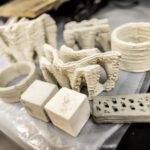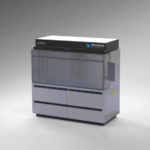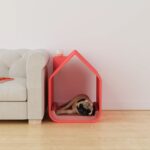Modeling and simulation is just one of the fields that bioprinting has given a boost to. Researchers often create artificial test models to see how biological systems interact with each other, from cell tissue to medicines. Now, researchers in Vienna are taking modeling even further by reproducing the placental barrier to investigate prenatal functions, and especially, the permeability of its membrane when passing crucial substances from mother to child.
The researchers at TU Wien developed a femtosecond laser-based 3D printing process that produces hydrogel membranes directly within microfluidic chips. They then populated these membranes with placenta cells and studied the material exchanges as though they were between mother and child. It is opening up new insights into processes such as glucose exchange and barrier permeability.
“The transport of substances through biological membranes plays an important role in various areas of medicine”, says Prof. Aleksandr Ovsianikov of the Institute of Materials Science and Technology at TU Wien. “These include the blood-brain barrier, ingestion of food in the stomach and intestine, and also the placenta.”
Studying the Placental Barrier
Studying the placental barrier has a lot of applications in the world of biotech and medicine. Most crucially, it allows biologists to study the interactions in the womb in cases where the mother may have diseases. As a result, they can better predict the effects of various ailments such as diabetes and possibly develop means to counteract the effects or at least advise new mothers accordingly.
The chip, as can be seen above, consists of two areas: one represents the fetus, the other the mother. They used the 3D printing process to produce the membrane that divides them. As one would expect, their 3D printer can work with resolutions within the micrometre range.
“Based on the model of the natural placenta, we produce a surface with small, curved villi. The placenta cells can then colonise it, creating a barrier very similar to the natural placenta.” Said Professor Ovsianikov.
Initial tests show that the artificial placenta behaves in a similar manner to its natural counterpart. It allows small molecules to pass through, while holding back the larger ones. In effect, it acts like a collander for potentially harmful molecules. The model can also allow researchers to investigate important aspects of nutrient transport from the mother to the fetus.
Microfluidics and chip-based organ research has opened up a lot of avnues for new research. It allows for medical professionals to measure the isolated features of organs and the interactions that alter their behavior. Researchers can also glean insight on disease patters and cure rates using these chips.
All featured images courtesy of TU Wien, retrieved via technologynetworks website.













